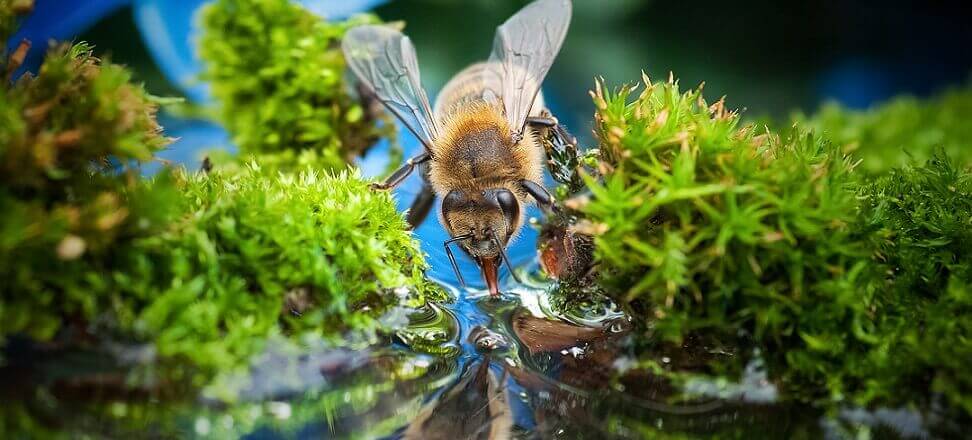Outside the window it is getting warmer, everything is waking up to life. Spring is the time when honey bees also begin to work intensively. After being confined to their hives for the winter, these beneficial insects need a lot of energy to build new patches of wax, feed their larvae and collect nectar and pollen. However, in order for them to work effectively, they need, like any organism, food, and one of the most important components of their diet is water. Why is it so important and where do bees get it from?
What are the water needs in bees?
Water is essential in many aspects of bee life. First, they use it to dilute honey and pollen so they can digest it and to prepare liquid food for their offspring. The concentration of sugars in the bee’s stomach must remain at a level of approx. 50% so that digestion is possible. Besides, without water, the nectar is too thick and heavy, making it difficult to transport.
When a bee brings nectar to the nest, it swallows it and thus mixes it with digestive enzymes. They break down sucrose (a complex sugar) into more easily digested simple sugars: glucose and fructose. It then spits the mass into a wax cell, where it is subjected to an evaporation process. At this point, the bees add water to the nectar to reduce its density and facilitate the evaporation process.
Water is also essential for maintaining proper humidity in the hive, and helps cool it in hot weather.
Where do bees get their water from in the spring?
Bees draw water from a variety of sources and find it by smell, not by sight. They choose the most flavorful, nutrient-rich one they can find. Puddles, ponds, streams, irrigation systems, sewage, animal pots, and even salt water or chlorine pools – any source is worth looking at, even the not-so-obvious ones. Plant secretions and guttation droplets attract bees, as do wet compost and recently plowed soil.
Why is it important to provide bees with access to water?
Lack of water can have serious consequences in hives. It threatens to stunt the development and growth of colonies, and in extreme cases even leads to the death of bees. That’s why it’s so important to ensure that insects have access to water, especially in times of drought when natural sources are limited.

 Polski
Polski






